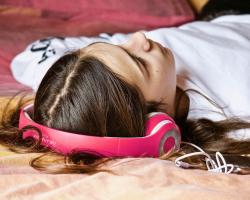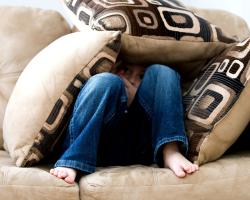Parents of autistic children try different methods of treatment to help their children. Psychologists warn that treatment should be selected carefully, because many of them are still insufficiently tested.
Zosia was three years old when a psychologist from the Synapsis Foundation diagnosed her with autism. Her parents decided to try all the possible methods of treatment. She has undergone dog therapy, hippotherapy and swimming with dolphins therapy. They became convinced that every therapy brought some progress; at least this was their impression. After ten sessions with dolphins - they claimed - their daughter started to react vividly, laugh and speak more. Therefore, there was progress. The question is whether the improvement really resulted from the applied therapies.
The most recommended one – behavioural therapy
Specialists from Poland and abroad expressed their doubts during the 2-day 7th Scientific Symposium of the Polish Association of Behavioural Psychology, which took place in Warsaw. They warned against educational and therapeutic methods whose effectiveness has not yet been confirmed.
Psychologists refer to the report of the National Centre for Autism in The USA, published in 2009, which suggests that educational and therapeutic methods applied during autism treatment have 30 percent proved effectiveness. These methods use the theory of learning, according to which even an autistic child can develop the desired behaviour and minimise the improper behaviour. The more such child adapts, the more he/she will be self-reliant and independent. And this is what we want to achieve.
Behavioural therapy starts with developing in a child basic skills like maintaining eye contact, following verbal instructions or developing the habit of proper eating. It is especially recommended for children under three, because in their case the therapy yields the best results.
Doubtful and harmful therapies
And what about other methods, the most advertised ones? The specialists don’t claim that they are totally ineffective and useless. Dr Monika Suchowierska of the University of Social Sciences and Humanities, explains that 60 percent of therapies show promising effects, but there is still too little evidence to fully trust them.
The remaining 10 percent of methods have not been investigated, so we don’t know anything about their effectiveness. According to Dr Suchowierska, we can’t predict whether they are totally ineffective, but we also don’t know anything about their effectiveness, despite the fact that they are often recommended methods. Among these methods there are therapies such as hearing training, sensory integration and diets. Parents are obliged pay a lot for many of the therapies and there is no certainty that this money is well spent.
Some of the methods might be harmful. Dr Suchowierska classifies chelation therapy as such. This therapy consists of removing toxic heavy metals from the patients’ bodies. Therapies classified as harmful are also therapies which rely on giving hormones or megadoses of vitamins to the autistic child.
All untested therapies are based on the fact that not everything is known about autism; for example, what causes this disorder and why mainly boys suffer from it. This disease develops in the foetal life and is connected with genetic aberrations and abnormalities of brain functioning, as well as some, not yet known, environmental factors.









Comments (0)